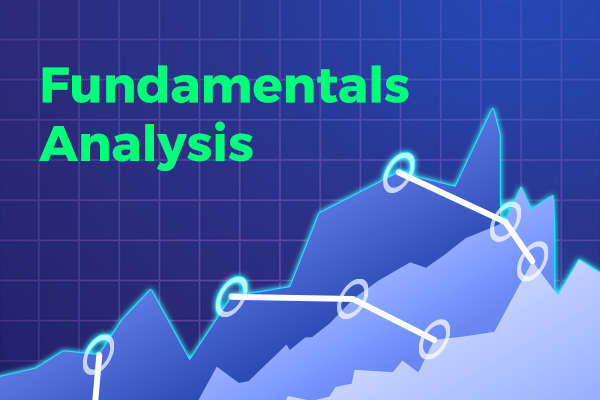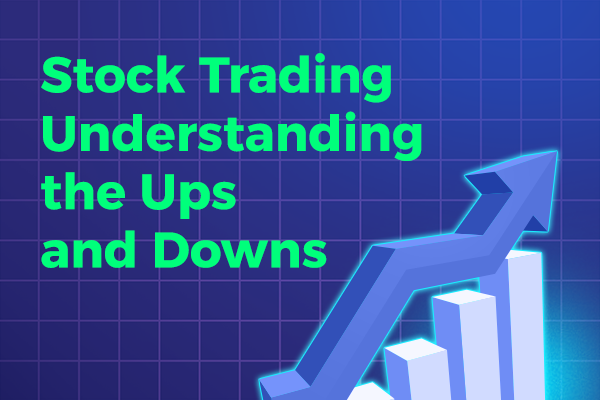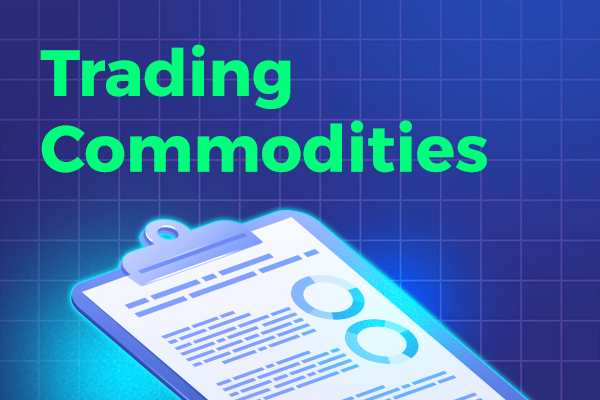Forex Trading for Beginners: A Step-by-Step Guide to Getting Started
If you’re interested in exploring the world of forex trading, but have no idea where to begin, you’re not alone. Forex trading can be a daunting prospect for beginners, with its technical jargon and complex strategies.
However, with the right guidance and a willingness to learn, anyone can become a successful forex trader. That’s where this step-by-step guide comes in. In this comprehensive guide, we’ll cover everything you need to know to get started with forex trading.
We’ll explain the basics of forex trading, including the currency pairs you’ll be trading, the different types of forex markets, and the key players involved in the industry. From there, we’ll walk you through the process of opening a forex trading account, choosing a broker, and making your first trades.
Whether you’re a complete beginner or simply looking to brush up on your forex trading skills, this guide has everything you need to succeed. So let’s dive in and start exploring the exciting world of forex trading!
Advantages and Disadvantages of Forex Trading
Before we dive into the world of forex trading, it’s important to understand its advantages and disadvantages. One of the biggest advantages of forex trading is its high liquidity, which means that there is always a buyer and a seller for any currency pair.
This makes it easy to enter and exit trades, and allows traders to take advantage of small price movements. Another advantage is the ability to trade 24 hours a day, 5 days a week, which allows traders to take advantage of global events and news.
However, forex trading also comes with its own set of risks and disadvantages. One of the biggest risks is the high volatility of the forex market, which can lead to significant losses if not managed properly.
Additionally, forex trading requires a significant amount of knowledge and experience to be successful, and beginners may find it difficult to navigate the complex strategies and technical analysis involved.
Understanding Forex Trading Terminology
Before we dive into the mechanics of forex trading, let’s take a moment to understand some of the key terminology involved. The first term you’ll need to know is “currency pair,” which refers to the two currencies that are being traded in a forex transaction.
For example, the EUR/USD currency pair represents the value of the euro in relation to the US dollar.
Another important term is “pip,” which refers to the smallest price increment that a currency can make. Pips are important because they determine the profit or loss on a trade. For example, if a trader buys the EUR/USD currency pair at 1.1000 and sells it at 1.1010, they have made a profit of 10 pips.
Other important terms in forex trading include “leverage,” which allows traders to control larger positions with a smaller amount of capital, and “margin,” which is the amount of money required to open a position.
It’s important to understand these terms before diving into forex trading, as they will be used extensively throughout your trading career.
How Forex Trading Works
Now that we understand some of the key terminology involved in forex trading, let’s take a closer look at how it works. Forex trading involves buying and selling currencies with the goal of making a profit. When you buy a currency pair, you are essentially buying the base currency and selling the quote currency.
For example, if you buy the EUR/USD currency pair, you are buying euros and selling US dollars.
The value of a currency pair is determined by a number of factors, including economic data, political events, and market sentiment. Traders use a variety of tools and strategies to analyze these factors and make informed trading decisions.
These tools include fundamental analysis, which involves analyzing economic and political data to predict future price movements, and technical analysis, which involves using charts and indicators to identify trends and patterns in price movements.
Choosing a Forex Broker
One of the most important decisions you’ll make as a forex trader is choosing a broker. A forex broker is a company that provides traders with access to the forex market, and acts as a middleman between the trader and the market.
There are a number of factors to consider when choosing a forex broker, including regulation, trading platform, fees, and customer support.
Regulation is one of the most important factors to consider when choosing a forex broker. Regulated brokers are held to a higher standard of transparency and accountability, which can provide traders with greater peace of mind.
The trading platform is also an important consideration, as it will be the primary tool you use to execute trades. Look for a platform that is user-friendly, reliable, and offers a range of tools and features.
Fees are another important consideration when choosing a forex broker. Look for a broker that offers competitive spreads and low commissions, as this can help you maximize your profits. Finally, customer support is important in case you encounter any issues or have questions about your account.
Setting Up a Forex Account
Once you’ve chosen a forex broker, the next step is to set up a trading account. This typically involves filling out an online application and providing some basic personal and financial information. You’ll also need to provide proof of identity and residency, such as a passport and a utility bill.
Once your account is set up, you’ll need to fund it in order to start trading. Most brokers offer a variety of funding options, including credit cards, bank transfers, and e-wallets. It’s important to choose a funding method that is convenient and secure, and that allows you to start trading as quickly as possible.
Fundamentals of Forex Trading Analysis
Now that you’ve set up your trading account, it’s time to start analyzing the forex market and making trades. The first step in this process is to understand the fundamentals of forex trading analysis. Fundamental analysis involves analyzing economic and political data to predict future price movements. This can include data such as inflation rates, interest rates, and GDP growth, as well as news events such as elections and natural disasters.
To conduct fundamental analysis, you’ll need to stay up-to-date on the latest economic and political news, and use this information to make informed trading decisions. This can be done through a variety of sources, including news websites, economic calendars, and social media.
Technical Analysis in Forex Trading
In addition to fundamental analysis, technical analysis is also an important tool for forex traders. Technical analysis involves using charts and indicators to identify trends and patterns in price movements. This can help traders predict future price movements and make informed trading decisions.
There are a variety of technical indicators that can be used in forex trading, including moving averages, Bollinger Bands, and relative strength index (RSI). Traders can also use chart patterns, such as head and shoulders and triangles, to identify potential trend reversals or breakouts.
Developing a Forex Trading Strategy
Now that you understand the fundamentals of forex trading analysis, it’s time to start developing a trading strategy. A trading strategy is a set of rules and guidelines that you use to make trading decisions. Your strategy should take into account your trading goals, risk tolerance, and trading style.
There are a variety of trading strategies that can be used in forex trading, including trend following, range trading, and breakout trading. Each strategy has its own strengths and weaknesses, and it’s important to choose a strategy that aligns with your trading goals and risk tolerance.
Managing Risk in Forex Trading
One of the most important aspects of forex trading is managing risk. Forex trading involves a high degree of volatility, which can lead to significant losses if not managed properly. There are a variety of tools and strategies that can be used to manage risk, including stop-loss orders, position sizing, and diversification.
Stop-loss orders are one of the most important tools for managing risk in forex trading. A stop-loss order is an order to sell a currency pair when it reaches a certain price, and is used to limit potential losses. Position sizing is another important tool for managing risk, and involves determining the appropriate size of each trade based on your account balance and risk tolerance. Diversification is also important, and involves spreading your trades across multiple currency pairs and strategies to minimize overall risk.
Managing Risk in Forex Trading
Now that you understand the basics of forex trading, let’s take a look at some tips for successful trading. The first tip is to start small and gradually increase your position size as you gain experience. This will help you minimize your losses and build your confidence as a trader.
Another important tip is to stay disciplined and stick to your trading strategy. This means avoiding impulsive trades and sticking to your predetermined risk management plan. It’s also important to stay up-to-date on the latest news and market developments, and to be prepared to adapt your trading strategy as needed.
Common Mistakes to Avoid in Forex Trading
Finally, let’s take a look at some common mistakes to avoid in forex trading. One of the biggest mistakes beginners make is overtrading, or taking too many trades without a clear strategy. This can lead to significant losses and can quickly erode your trading account.
Another common mistake is failing to manage risk properly. This can include not using stop-loss orders, using excessive leverage, or failing to diversify your trades. It’s important to remember that forex trading involves a high degree of risk, and that managing this risk is essential for long-term success.
Resources for Learning Forex Trading
If you’re looking to learn more about forex trading, there are a variety of resources available. Online courses, books, and webinars can provide valuable insights into the world of forex trading, and can help you develop your trading skills and strategies.
Additionally, many forex brokers offer educational resources and tools, including trading platforms with built-in indicators and analysis tools. These resources can be a valuable asset for traders of all experience levels, and can help you stay up-to-date on the latest trends and market developments.
Conclusion
Forex trading can be a challenging and rewarding endeavor for those who are willing to put in the time and effort to learn the ins and outs of the industry. By following the steps outlined in this guide, you can be well on your way to becoming a successful forex trader. Remember to stay disciplined, manage your risk effectively, and keep learning and adapting to the ever-changing world of forex trading.






